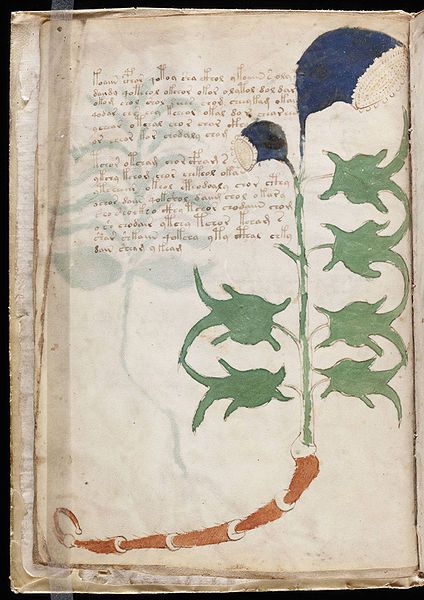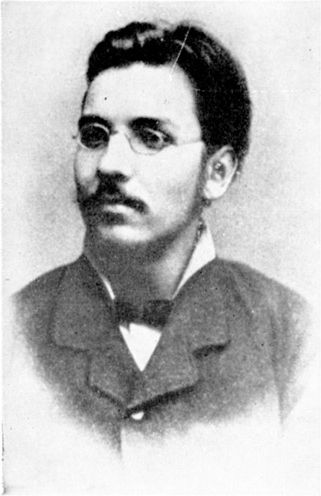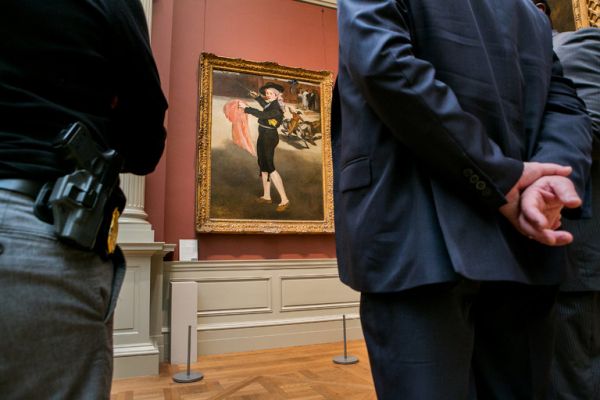Word
of the manuscript spread. In 1931, John M. Manly, a Chaucer expert at
the University of Chicago—who’d been “dabbling” with the manuscript for
years—published a paper that erased Newbold’s findings: Those
irregularities at the edge of the letters weren’t shorthand; they were
simply cracks in the ink.
But Manly’s discovery only fueled the
public’s desire to understand the mysterious manuscript. Before long,
experts from every field had joined the effort: Renaissance art
historians, herbalists, lawyers, British intelligence, and teams of
amateurs. Even William Friedman, who had led the team that solved
Japan’s “unbreakable” Purple cipher in World War II and had since
become head cryptanalyst at the National Security Agency, took a crack
at it. He never got close to solving it.
There are lots of
questions surrounding the Voynich manuscript, but the most essential
is: What is it? Because of the numerous illustrations of plants, many
believe the manuscript may be an herbalist’s textbook, written in some
kind of cipher or code—and the two terms are not synonymous.
Technically, a code can only be cracked if you have—or can figure
out—the guide to that code. A cipher is a more flexible algorithm, say,
where one letter is substituted for another. (For a simple example,
There
are a number of ways to crack a cipher, but one common technique is
frequency analysis. You count all the characters, find which are most
common, and match that against a similar pattern in a known language.
More elaborate ciphers might require different kinds of frequency
analysis or other mathematical methods.
What
Friedman saw—and what makes the Voynich so compelling—is that the text
isn’t random. There are clear patterns. “There’s a set number of
characters, an ‘alphabet’ with letters that repeat,” says Elonka Dunin, a
Nashville video game designer and author of
The Mammoth Book of Secret Codes and Cryptograms who
created her own page-for-page replica of the Voynich (just for fun!).
But she has doubts that the book is a cipher. “Ciphers back then were
just not that sophisticated. With modern computers, we can crack these
things quite quickly.” But a computer hasn’t yet, and that’s a red flag.
Back
in 1959, Friedman came to the same conclusion. Never able to crack the
code, he believed the text was “an early attempt to construct an
artificial or universal language of the a priori type”—in other words, a
language made up from scratch. Some agree. But others think the words
might be a language of another kind. Which brings us to Bax.
It took a split second
for Bax's Google results to confirm that kaur was a name in Indian
herbal guides for black hellebore. It was a match! “I almost jumped up
and down,” he says. “All of the months and months of work were starting
to show some cracks in the armor of the manuscript.” That night, he
couldn’t sleep. He kept going over the research in his head, expecting
to come up with a mistake.
If he was right—if certain words were
identifiable as plant names—then his findings agreed with Friedman: The
book was not a cipher. But unlike Friedman, Bax didn’t think the
language was made up. He was convinced that it resembled a natural
language. He’s not alone. One study of the Voynich, published in 2013
by Marcelo Montemurro and Damián Zanette, noted that statistical
analysis of the manuscript showed that the text has certain
organizational structures comparable to known languages. The most
commonly used words are relatively simple constructions (think the or
a), while more infrequent words, those that might be used to convey
specific concepts, have structural similarities, the way many verbs and
nouns do in other languages.

However,
there are quirks. In most languages, certain word combinations recur
frequently; but according to Zandbergen, that rarely happens in the
Voynich. The words tend to have a prefix, a root, and a suffix, and
while some have all three, others have only one or two. So you can get
words that combine just a prefix and a suffix—
uning, for
example. Further, there are no two-letter words or words with more than
10 characters, which is strange for a European language. That’s enough
to put some people off the idea that it could be a natural language.
When
Bax started working with the text, he treated it like Egyptian
hieroglyphics. He borrowed an approach used by Thomas Young and
Jean-François Champollion, who in 1822 used the proper names of
pharaohs—easy to identify because they were marked with a special
outline—to work backward, assigning sound values to the symbols and then
extrapolating other words from these. This was something that, Bax
says, no one had systematically attempted on the Voynich.

The
first proper name Bax identified was a word next to an illustration of
a group of stars resembling Pleiades. “People before us suggested that
that particular word is probably related to Taurus,” he says. “If you
assume it says
Taurus, the first sound must be a ta, or somewhere in that region—ta, da,
Taurus, Daurus.”
The process seems insanely daunting at first: “On the basis of one
word alone, that’s just complete imagination,” he says. “But then you
take that possible
ta sound and you look at other possible proper nouns through the manuscript and see if you can see a pattern emerging.”
Bax worked for a year and a half, deciphering crumbs of letter-sound correspondences. Eight months after he confirmed
hellebore,
he published a paper online detailing his method. He cautiously
announced the “provisional and partial” decoding of 10 words, including
juniper, hellebore, coriander, nigella sativa, Centaurea, and the constellation
Taurus.
"University
of Bedfordshire professor cracks code to mysterious 15th-century
Voynich manuscript," the local paper blared. Quickly, news
organizations around the world joined in.
Nothing major happens
in the long saga of the Voynich without media hype. The last time it
had happened, in 2004, a British computer scientist named Gordon Rugg
had published a paper showing that the whole thing might be an
elaborate hoax created expressly to separate a wealthy buyer from a lot
of money. And where there’s media controversy, there’s contention among
Voynich obsessives. Rugg says his theory was like “someone grabbing
the football and walking off the pitch in the middle of a really fun
game.”

Bax’s
proclamation came with its share of controversy, too. People in the
Voynich world have seen a lot of so-called cracks over the years, none
of which have panned out, so when the news stories appeared on Bax’s
paper, Dunin, the video game designer, just laughed. “The media just
picks it up uncritically and says, ‘He must have solved it.’ He
didn’t,” she says. “He’s saying, ‘I saw this, and this looked
intriguing,’ and that’s perfectly valid. But it’s not a crack.” Others
criticized his methods: Some had issues with the idea that the first
word on a page is a plant name, because many of those words start with
one of only two letters. Some found it weird that his translation has
three different characters that stand for the letter
r.
Bax
doesn’t claim he’s cracked the code. “I’m prepared to see that some of
the interpretations I’ve suggested are revised or even thrown out,” he
says. “That’s the way you make progress on something like this. But
I’m pretty convinced that a lot of it is solid.”
He’s determined
to prove it, by stoking more dialogue within the obsessive community.
In addition to the Voynich Wikipedia page, there’s an entire Wiki
devoted to the book’s oddities and the efforts to crack it. Mailing
lists started in the early 1990s are still going strong. Reddit, too,
has taken an interest, and when Bax did an AMA after publishing his
paper, it got 100,000 pageviews. Bax himself has set up
a website to
document his efforts. He actively encourages participation, fielding
comments from visitors eager to help him decode the book.
One such
volunteer is Milan-based Marco Ponzi, who had been researching Tarot
card history when he found Bax’s paper. Ponzi began commenting on Bax’s
website, suggesting there might be parallels between certain diagrams
in the volume and images that appear in the Tarot. “Since Stephen is so
rigorous and so kind, I feel encouraged to propose new ideas,” he
says. “I don’t know if I have contributed anything really useful, but
it is very fun.”

“Marco
is bringing his expertise in medieval art, iconography, and Italian
manuscripts—which I don’t have,” says Bax. “This is one of the beauties
of doing it through the web.” Indeed, it’s become an international
collaboration. Bax has asked other readers to add their own
observations in the comments section, and spends a lot of time
responding to queries and participating in the discussion. In the
future, he hopes to host conferences and seminars about the book, and to
set up a site where he can crowdsource efforts to decode other Voynich
sections. If the method works, he expects that the manuscript could be
decoded within four years.
What will be revealed when—and if— it
is? Bax believes the manuscript is a treatise on the natural world,
written in a script invented to record a previously unwritten language
or dialect—possibly a Near Eastern one—created by a small community
that later disappeared. “If it did turn out to be from a group of
people who have disappeared,” he says, “it could unlock a whole area of
a particular country or a group that is completely unknown to us.”
Other
theories put forth that the secrets locked inside the Voynich’s vellum
pages could reveal a coming apocalypse—or merely the details of
medieval hygiene. Some people think the script could be the observations
of a traveler who was trying to learn a language like Arabic or
Chinese, or a stream-of-consciousness recording of someone in a trance.
The most bizarre theories involve aliens or a long-lost underground
race of lizard people.
It’s possible that the book will never
tell us anything. To Zandbergen, whether it has huge secrets to reveal
doesn’t matter at all. He just wants to know why the book was written.
Whether it’s the work of a hoaxer, an herbalist, or a lizard person,
the Voynich is important all the same. “It’s still a manuscript from
the 15th century. It has historical value,” he says. But until the
truth is revealed—and probably even after—people will keep trying to
crack the Voynich. After all, who doesn’t love a good puzzle?




 The
story starts with a London-based book dealer named Wilfrid Voynich,
who discovered the book in 1912. From the beginning, Voynich was
evasive about how he acquired the tome—he claimed he’d been sworn to
secrecy about its origin, and the story he recounted changed often. In
the one he told most frequently, he’d been at “an ancient castle in
Southern Europe” when he found this “ugly duckling” buried in a “most
remarkable collection of precious illuminated manuscripts.”
The
story starts with a London-based book dealer named Wilfrid Voynich,
who discovered the book in 1912. From the beginning, Voynich was
evasive about how he acquired the tome—he claimed he’d been sworn to
secrecy about its origin, and the story he recounted changed often. In
the one he told most frequently, he’d been at “an ancient castle in
Southern Europe” when he found this “ugly duckling” buried in a “most
remarkable collection of precious illuminated manuscripts.”



